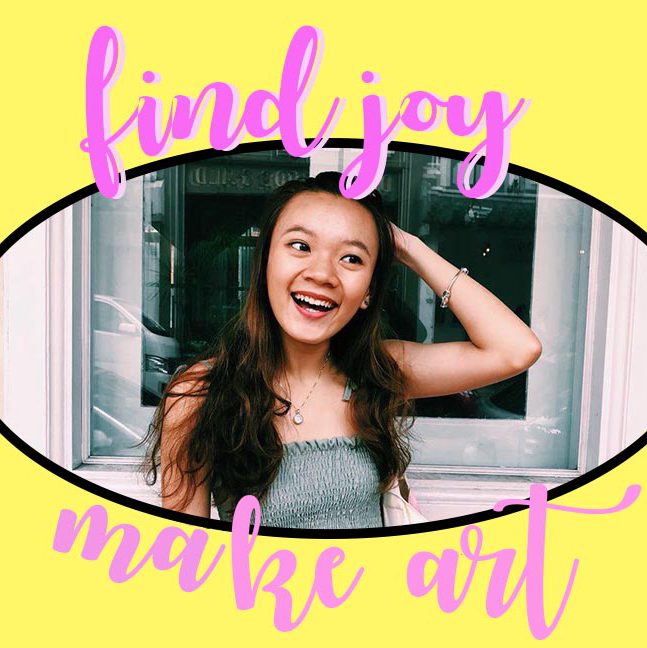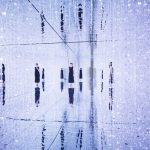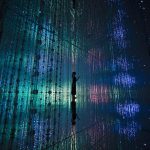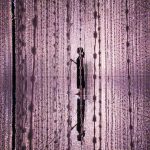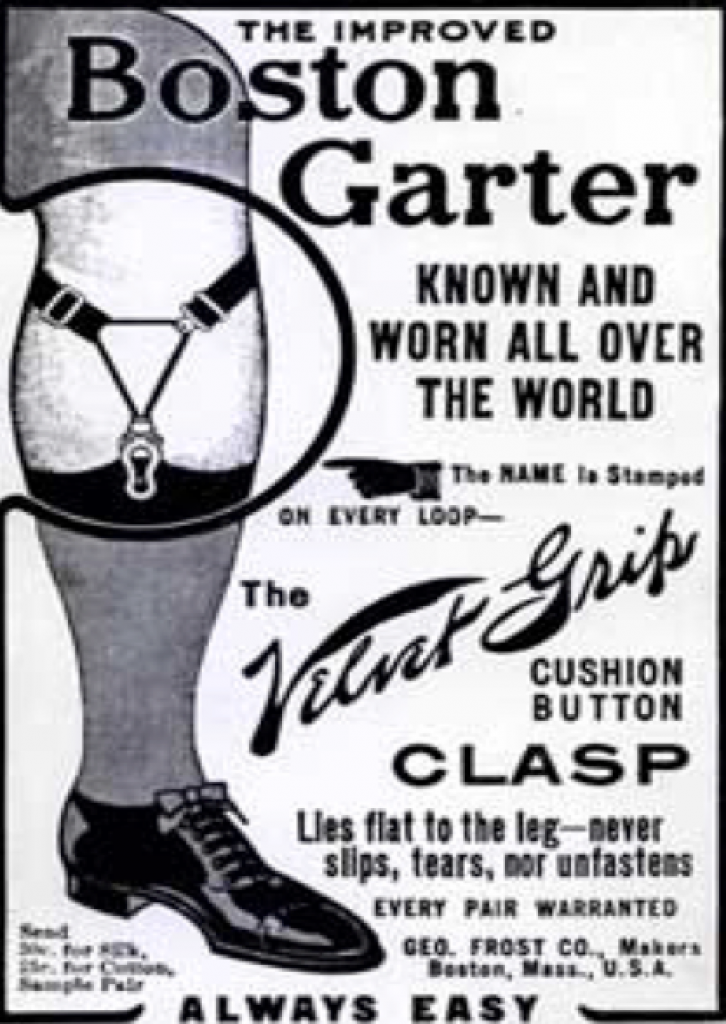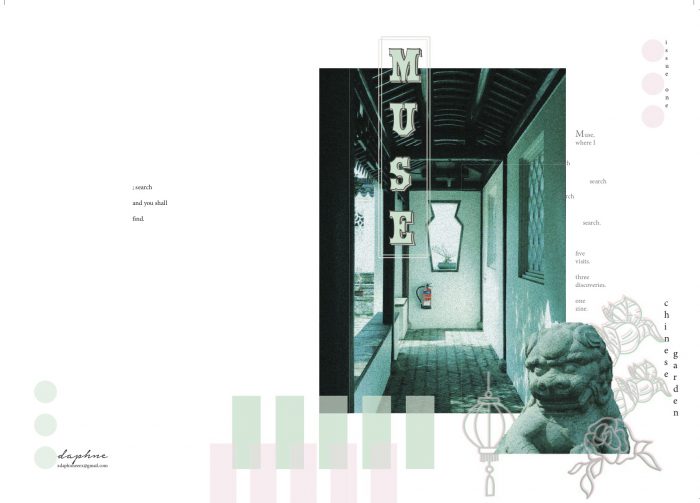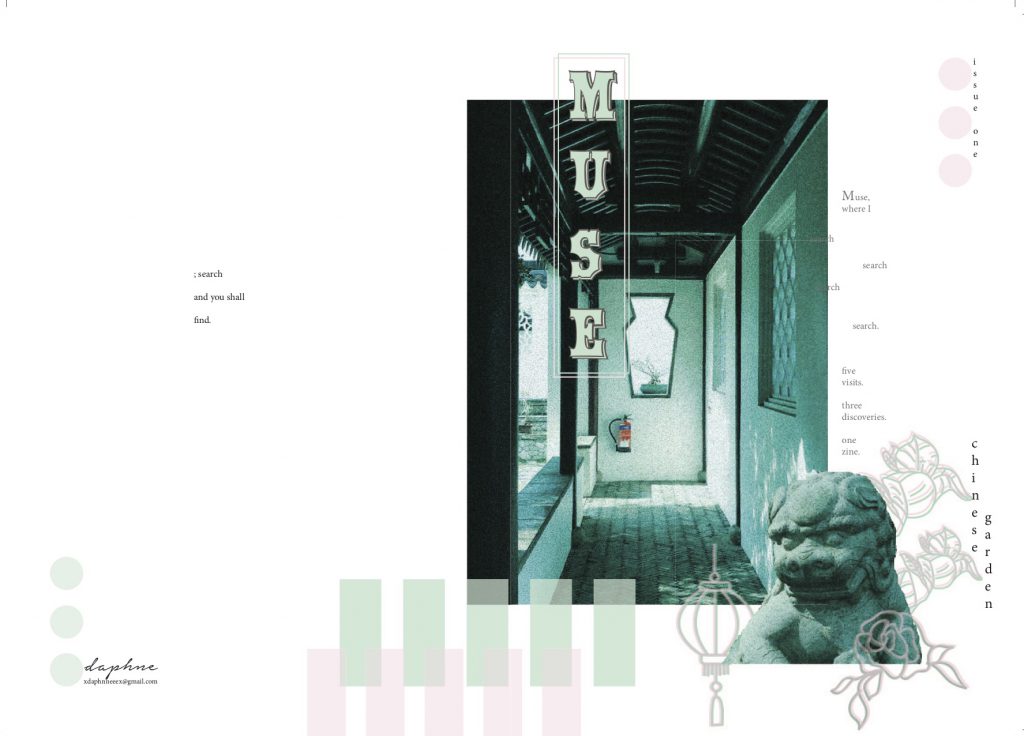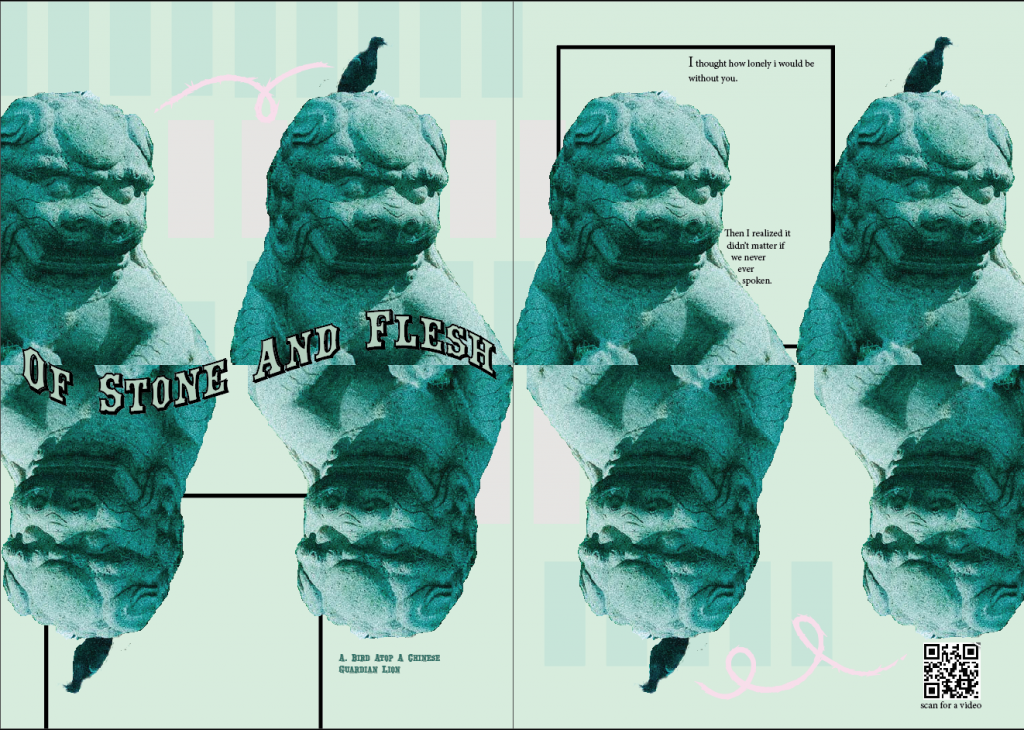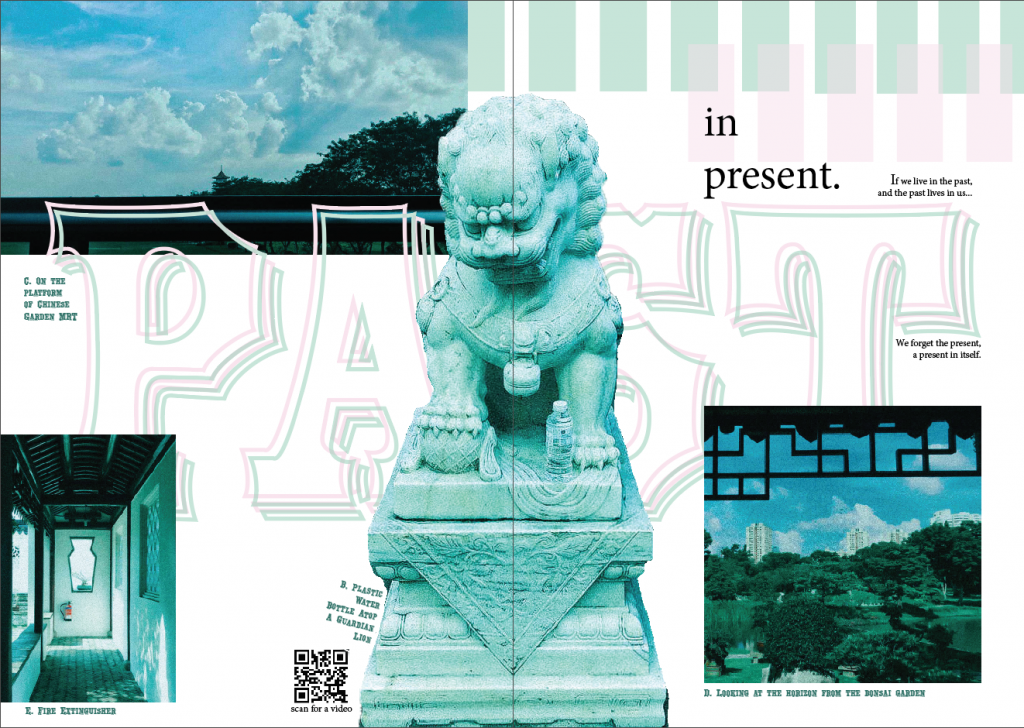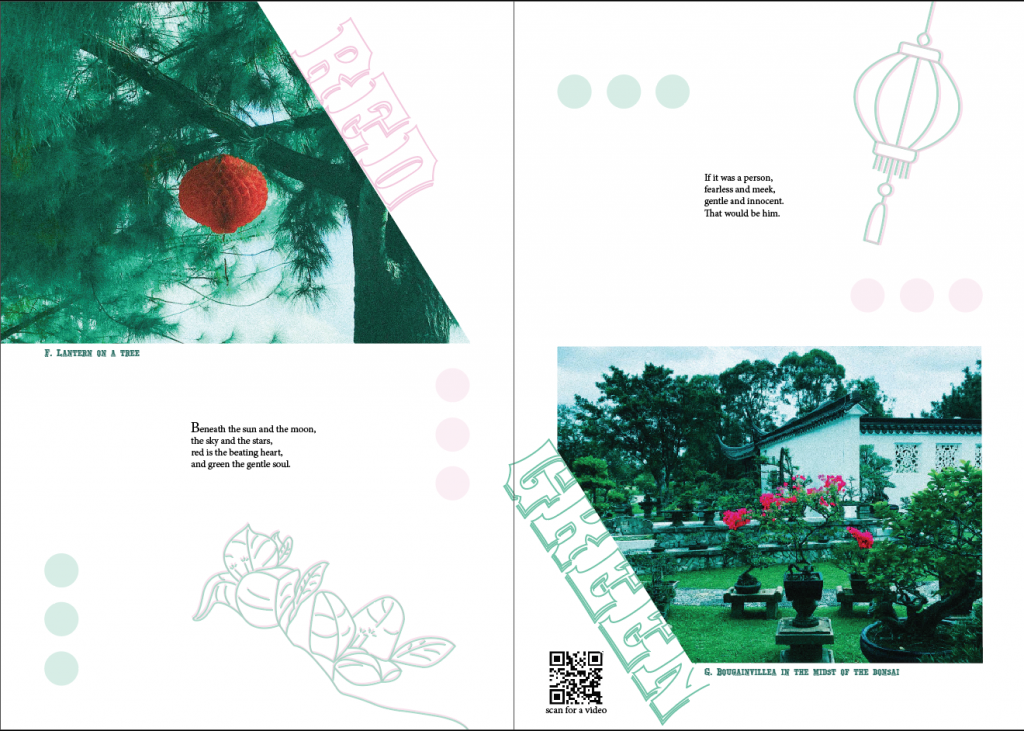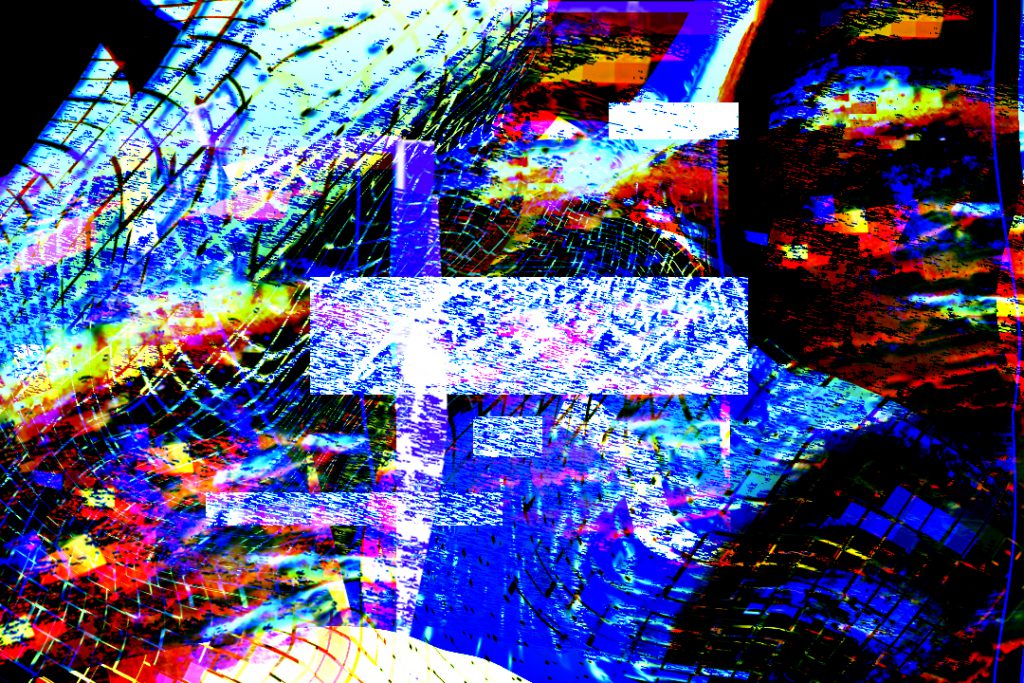This Manifesto acknowledges the change in time and how the society has moved forward. With technological advancement and the rise in media art and digital art, dada is not dead. Glitch is the new dada. The emphasis on the randomness, the illogical. This is how we embrace it today.
writings
There are 14 posts tagged writings (this is page 1 of 2).
Final Research Hyperessay – Wander Through the Crystal Universe
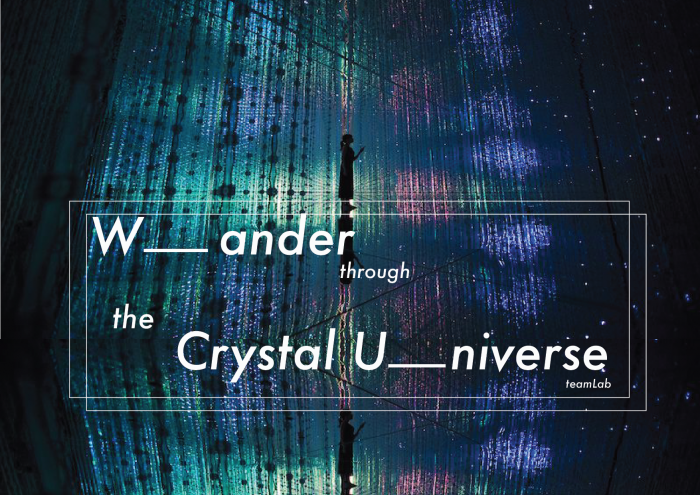
taken from teamLab
A Concoction of Human and Nature
teamLab is an art collective that consists of many specialists who bring to the table an array of installation pieces we can witness at the ArtScience Museum today. As a team of programmers, artists, engineers, CG animators, mathematicians and architects, this collective is indeed one that meld together different professions to create stunning interactive installations.
With a vision to successfully embody art, science, technology, design, nature into one, creating borderless immersive installations has been their forte. Having produced exhibitions all around the world, in Singapore, Japan, Sydney, New York, the team has seen their works go global. teamLab, as a collective, challenges their works to amalgamate human and its natural surroundings, bringing in our innate environment into the interactive, immersive realm.
Digital technology has allowed art to liberate itself from the physical and transcend boundaries. -teamLab
Indeed, this is apparent in their portfolio of works.
I m m e r s i n g into the Life-size Installation: Wander Through the Crystal Universe
An interactive installation work that has many minute delineate light points coming together to form a sphere, Wander Through the Crystal Universe is one that is mesmeric. Tapping on the soundscape and visual effects by the light points, Wander Through the Crystal Universe is one that echos Scott Fisher’s concept of immersion.
Evaluation of image realism should also be based on how closely the presentation medium can simulate dynamic, multimodal perception in the real world… The image would move beyond simple photo-realism to immerse the viewer in an interactive, multi-sensory display environment.
Wander Through the Crystal Universe, as mentioned by Fisher, is one that submerges its audience into the massive life-size container that brings its audience into a whole new realm. Mesmerising orchestra of moving light points creates an abstract narrative, bringing the audience a whole new experience. The phenomenon of “suspension of disbelief”, when teamLab engulfed the audience with a stimuli of reality (not in its entity), through stimulating the audience visually and auditory. What is created is a realm of not unquestionably what realism looks like, but an augmented, tweaked reality, as if of a different world. The circumambient forms an expression of a world inside Crystal World, an imaginative, impressionable space created through the combination of light and sound effects.
I N T E R A C T I V I T Y facilitating H y p e r m e d i a
Audiences can fish out their mobile phones and gain control of what is displayed in the Crystal World. A universal element is selected, by simply swiping in the direction of the Crystal World. The element will then be shown through the changes in the light points that lights up and are created. This creates a different “cosmic” experience for the audiences. With interactivity as a key part to appreciating this piece, distortion in the flow of the narrative may occur when one selects a universal element while one is simultaneously showing on the installation. The abstract representations of the universal elements might be distorted in a non-sequential narrative, showing immediate changes once a universal element is chosen.
The “surprise” element to the installation is the interaction that is allowed by the audiences, by changing the effects of the light points. Removing the passive characteristic of the piece, audiences can choose their type of telepresence with mobile control. This choice factor is the only thing that is non-programmed, totally up to the sovereignty of the audience.
Order and Disorder in E n t r o p y
In the ever-changing narrative of the effects of the light points, it created a series of possibilities, creating an entropy. There is a sense of unpredictability as the narrative can change with a click of a button on the mobile by any of the audiences. For Wander Through the Crystal Universe, it is of low entropy because of its structured and finite number of possibilities. Yet, entropy in this installation may not be wholly disordered. Since the narrative will flow from one to another with the change in the effects of the light points, the instances where the change is not stark, order is still in place. In the instance of a sudden transition, disorder occurs. Hence proves that the entropy here does not always lead to a disorder.
New E r a of Art
Indeed, digital art that taps on technology and science is moving forward, putting on the table new forms of art appreciation. Unconventional, non-traditional pieces reflects the advancement of the society, where technology plays a huge role today. “Art reflects the state of the society” and likewise, the new era of art places its medium on technology and science. Nam Jun Paik, the father of video art, pioneered the idea of creating art digitally (video art), pushed the boundaries of the traditional mediums. Advancement in technology also has played a part in making digital art more accessible and relatable to people of all walks of life. We now live in the era where art starts to mould itself, digitalising, gearing away from the conventional brush and paint, pushing the boundaries of the new medium.
References
Nerdist – Explore the Cosmos in the “Crystal Universe” Installation
Virtual Environments, Personal Simulation and Telepresence
Entropy and Art the View Beyond Arnheim
The Chicago School of Media Theory – Hypermedia
Art is a Reflection on Society and the Times
John Maeda: Innovation is formed when art meets science
DesignBoom: borderless and brilliant: teamlab’s dreamlike digital art museum is now open
supernormal // post presentation essay
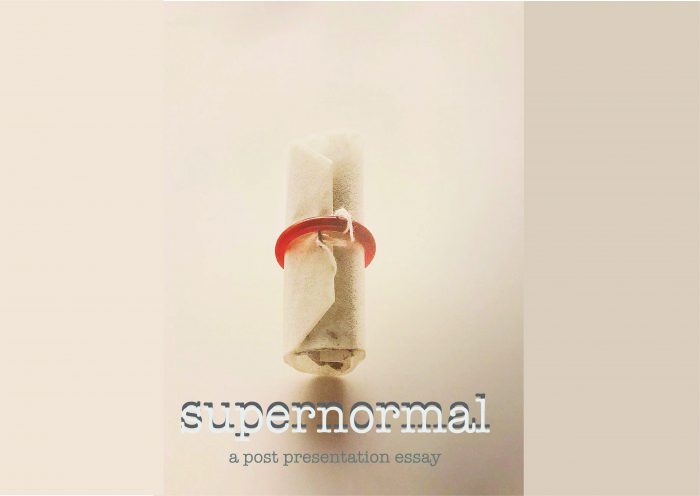
At the Milan Furniture Show of 2005, what shocked Fukasawa about the aluminium stools he had designed then sparked the birth of a new design philosophy and movement that later was coined “Supernormal”. The designer aluminium stools were “plonked on the floor for people to sit on” instead of being placed on pedestals and “displayed on plinths like the other new products” at the show that year (Rawsthron, 2006). The stars of the show was not the limelight of the Milan Furniture Show, seamlessly blending themselves as entourages. However, how product designer, Jasper Morrison viewed the entire situation at the Milan Furniture Show was vastly different. He was taken aback by that epiphanic phenomenon. The set of designer furnitures integrated into the environment flawlessly. That was when we saw the birth of Supernormal through an empirical moment.
Supernormal consists of being less concerned with the visual aspects of the object, putting more emphasis on the practical use of the object in its environment (Domus, 2006). The main focus here is how the use of the particular object, in its most simplified form, impacts its users with solely its functionality. As Naoto Fukasawa would put it as his philosophy, “Achieve simpleness as a way to achieve completeness and harmonious relationship between users, objects, and environment.” (Nedgis, N.D). When the use and the simple design of the product coalesces and unites, this amicable fusion forms a whole. When user experience is further enhance by stripping away the counterproductive details, this simplicity completes and complements well in our daily environment. For Morrison, Supernormal is a link bridge between going away from the ordinary and trying to value-add to our ever changing man-made environment (Bhan, 2008).
Notable artists in the field of Supernormal designs include founders Naoto Fukasawa and Jasper Morrison.
Fukasawa’s philosophy is simply, “Without Thought”. He places awareness in the normal, mundane ways people interact and live in the environment (Fukasawa, 2007). Therefore, his designs often revolve around the unconscious, harmonious accord of people and things in its environment (Fukasawa, 2007). His designs incorporates human qualities that plays with our common knowledge of problem solving. He uses shape, colour, texture in its most condensed manner in his products in the enhancement of his simplistic industrial designs for products for users to have an instinctive knowledge of how and what the product is used for, stripping the need for an instruction manual (Fukasawa, 2007). He often uses the phrase “designing the unconscious”, convening the need to focus on our “core awareness” (Fukasawa, 2007). He is attentive to the daily actions we all take, cracking an egg or wearing our socks. Observations then turn into analytical break down of the every actions we make, having an “active memory” of each step in our daily task (Fukasawa, 2007). After the analysis, thoughtful design then takes place. This is what differentiates his meticulous design in the market. As for Jasper Morrison, his role as a designer revolves around enabling ideas to surface, avoiding creating a “facade” for the products, making things out of nothing. Instead, it is by being aware of what is already in the surrounding (Fukasawa, 2007). Supernormal products often as he described as “lack of problems” (Fukasawa, 2007). The design itself seem to have an ease that suggest that the problem never really existed, very much aligned with Marcel Duchamp’s notion of “there is no solution because there is no problem” (Fukasawa, 2007). There is a clear notion tapped onto the idea of Supernormal products. They have positive atmospheric influence and by default, they look acutely normal (Fukasawa, 2007). They are objects that we are so accustomed to see and use that we see and use them without thinking, or thinking too much into it. Supernormal products “play on a deeper level of human sensibilities” as it allures to an common knowledge we all have, based on our shared experiences. It is the experience of figuring things out with what we have and trying to get by in our natural habitat (Fukasawa, 2007).
One appliance worth noting under the Supernormal manifesto is the CD Player that Naoto Fukasawa designed for MUJI in 1998. Fukasawa noted the visual similarity the design he had for the CD Player with that of the rotating blades of a domestic extractor fan. He incorporated the innately simple structures of the extrator’s operating controls – a straightforward pull-cord used to switch the appliance on and off (Fukasawa, 2007). The cord very instinctively invites users to pull it, triggering the operating controls to play the music in the CD Player. This creates an interactive experience between the user and the product. Fukasawa was very clear in creating an appliance that would evoke an unconscious cause of action for the users to utilize that product in their own environment (V&A, N.D). Despite placing large focus on the use of the product rather than the visual aspects of it, Fukasawa makes sure his users know what the product is used for. The CD Player designed for MUJI holds a shape of a typical CD cleverly placed in the middle of the player (Fukasawa, 2007). This is to ensure that users instinctively know what the use of the product is. This, as such, has become a norm design factor sifted into industrial design in creating electronic goods and household appliances (Fukasawa, 2007).
Having studied and observed how Naoto Fukasawa’s works are vastly different from the rest in the product design industry, Masato Sasaki deemed his design philosophy to be one that supplements James Gibson’s study of ecological psychology although they are not based on it (Fukasawa, 2007). In summary, Gibsonian theory about ecological psychology brings relation of potential human action to its living environment, under the umbrella of the term “affordance” (Fukasawa, 2007). “Affordance” describes the property of the object that provides its users with perceived or latent potentials — “action possibilities” (Fukasawa, 2007). This theory proves that objects cast a passive environment into one that is in an active determinant role (Fukasawa, 2007). Fukasawa uses minute details, guiding the behaviours of users. For instance, Fukasawa’s tea bag for the “Re-design” exhibition has a duo function ring slot that neatly holds the tea bag in place and is also the handle of the tea bag while brewing the tea, bearing the colour of the tea when it is good to consume. The whole interaction of tea drinking with Fukasawa’s design is the subconscious realization of when the tea is good to drink by colour observation (Fukasawa, 2007). Granted, the use of mnemonic devices on guiding behaviours in product design proves successful in the designs of Fukasawa.
Good design always explains itself naturally, without the need of an instruction or a thought of “what is that for”, with that, I think Fukasawa and the pioneers of Supernormal has successfully and seamlessly integrated products of design into our daily lives with stealth. Scraping the need of an instruction manual. Many designers strive to make their work out of the blue, extraordinary. Yet, looking at Fukasawa’s simplistic designs that functions incredibly well, where function and design work hand-in-hand, it is of no surprise that his smart designs are indeed a trademark of industrial designs. I quote from Naoto Fukasawa himself, “The objects that really make a difference to our lives are often the least noticeable ones, that do not grab our attention. They are the things that add something to the atmosphere of our homes that we would miss the most if they disappear. That is why they are supernormal” (Rawsthron, 2006). Certainly.
1213 Words
Bibliography
Bhan, N. (2008, March 23). ‘Jasper Morrison and Naoto Fukasawa discuss Super Normal Design’ Core77. Retrieved from: https://2021supernormal.wordpress.com/dialogue-defining-super-normal-jasper-and-naoto/
Domus. (2006, July 10). Naoto + Morrison = Supernormal. Retrieved from: https://www.domusweb.it/en/design/2006/07/10/naoto–jasper–super-normal.html
Fukasawa, N. (2007). Naoto Fukasawa. Phaidon
Nedgis, N.D. Naoto Fukasawa. Retrieved from: https://www.nedgis.com/en/designers/naoto-fukasawa
Rawsthorn, A. ( 2006, June 11). Celebrating the beauty of ‘super normal’ little objects of daily life, International Herald Tribune. Retrieved from: https://www.nytimes.com/2006/06/11/style/11iht-dlede12.1944160.html
V&A, N.D. CD-Player | Fukasawa, Naoto. Retrieved from: http://collections.vam.ac.uk/item/O1227135/cd-player-fukasawa-naoto/
The History of Design; When it all started?
Victor Margolin, an emeritus professor of design history at the University of Illinois, Chicago, defined design into two large umbrella, design, created to meet the needs of the mass and Design, a term related to production in mass and used for communication to a large audience. How he coined the term “design” today “is continuous with the basic human need to organize the material environment for survival purposes“. Realizing the definition/s of “design” aforementioned is important to further dwell into the history of design itself. As such, it is also important to understand the meaning behind the work to deduce whether they are designs or art to be interpreted.
Design began in the midst of the Industrial Revolution, when there was a massive shift in production. As supply went up to meet the demand of the consumerist environment, advertising created an increase in the demand for design. Therefore, the first peak in the use of design as a norm in the society, in my opinion, properly started during the first wave of Industrial Revolution.
References:
The Implication of Advertising During the Industrial Revolution
Daphne Tan – Locale Part II: MUSE | chinese garden [Gallery]
Communication Through Social Broadcasting, A Preface

Computers, Changing the Way Art is Viewed
… if the first computer was the abacus, the ultimate computer will be the sublime aesthetic device: a parapsychological instrument for the direct projection of thoughts and emotions. -Gene Youngblood
Yes, it is obvious that in today’s world, technology and the “screens” have taken over the world instead of the evil ones… or is the former the evil ones?
A group of us got the privilege to attend the international Art of the Network Practice Online symposium over the course of 3 days, of which I had attended day 1: Keynote by Maria X and internet performance by Annie Abraham, who we got to work with for a previous internet performance with her in class, and day 3: Internet performance by Jon Cates and his collaborators.
But the chisel, brush, and canvas are passive media whereas the computer is an active participant in the creative process -Gene Youngblood
While the traditional mediums are submissive to the creation of work, the computer remains on par with the creators of art. Though there was a fixed linear way of the interaction of art in the past (and still occurring), whereby the audience only gets to interact with it after it is done up in the studio, this audience interaction with the art piece and the creation of art can now occur concurrently. That being said, the computer remains the one that will perform under instructions and rules, codes and hypertext markup language. Annie Abrahams’ Online En-semble -Entanglement Training shows how a performance can be put up on the Third Space, and how audience interaction and the creation of art can now occur concurrently.
Annie Abrahams’ Online En-semble – Entanglement Training
In Annie Abrahams’ Online En-semble – Entanglement Training, entanglement is accepted, embraced and celebrated. A performance that needs the collaboration and the compromise of the collaborators, this performance shows clearly how it cannot be done without DIWO and the Third Space, concepts that are greatly emphasized. As the subject matter of the online performance, latency, something that is hard to take control of, takes over instead of being suppressed. Latency being understood as “the wait time introduced by the signal travelling the geographical distance as well as over the various pieces of communications equipment.”
Her collaborators come from different countries who possess different cultural backgrounds, where they are connected on the Third Space through Adobe Connect itself on Thursday night, 29 April 2017. In the online performance, latency was observed. The collaborators had to accept the disruption, act upon it and make do with the imperfection. The protocol was to have the collaborators take turns to report their latency in their connection. Also, her protocols were simple for the performance, that allowed for the free-play and the authenticity of her collaborators.
What the mass then realize was that it was tough for them to be in the Third Space all at the same time, despite seemingly being connected to one another through the visuals. They embraced the glitches, the lag-time, creating a new paradigm dismissing the events where disruptions and wait are detested. Just like the Japanese philosophy of Wabi-sabi, Online En-semble: Entanglement Training captured the beauty of disorientations, turn it a hundred and eighty degrees, creating a mesmerizing choreographed internet piece. Although there was a point in the symposium that Annie Abrahams microphone was not working the way she wanted it to, I thought it gave a perfect touch to the piece, aptly applying to the very objective of Online En-semble: Entanglement Training, the ultimate test of the entanglement training itself. Rather than considering it as a katakana, it was taken in as part of the piece. Annie Abrahams successfully took the minor keys of the internet and composed an internet piece with a perfect harmony, a harmony of disorientations.
It is internet performers like Annie Abrahams who revolutionize the way art is – how art is portrayed across to its audiences and how art is perceived by its audience. Moving drastically from brick and mortar museums and art studios, art can also be observed just at the comfort of our homes, performed on the Third Space for its netizens.
Jon Cates’ IGAIES – How the Boundaries of Communication is Pushed
Jon Cates’ IGAIES (intimate glitches among internet errors) then further touches on how Internet Art can communicate through a performance our very society that touches our senses that challenges, pushes the boundaries of a performance art.
It first started out with a few performers showed on screen with filters over their faces, with their faces still visible to the online audiences.
I thought this has very successfully bring across the notion of our digital identities, our online personas, illustrated with the different filters. We can be who we want to be online. At the beginning of the performance, classical music was played at the background, as if signalling the very start of the performance and how we used the internet when it first start to bloom, creating the global village, a notion brought forth by McLuhan.
As the performance progresses, the imageries became more mysterious and left the online audiences wanting to know more. This is especially so when the online audiences can see a jar of leeches on the table, yet not know what is going to happen.
This is an example of a part where the online audiences are left more unsure than the physical audiences at Chicago itself.
What really shocked us was when the leeches are placed on Roberto Sifuentes, a near-death experience.
Leeches can be seen as good and bad. Good in the way that it can cleanse the body by sucking out the toxic in the blood and bad in the way that it gains out of the the body it hangs onto. Perhaps, it is both. The same way how the internet has impacted the world. How it sucks the living out of us, that we live for the “gram”, or “do it for the gram” which shows how netizens are living for the things they put on their social media. And on the other hand, the saving grace, or the realization of our overdosage of it. “Everyone dies cause of technology”, perhaps its a question of when.
It is fascinating how IGAIES brought to light the dark side of media. Of which, the venue of the performance, Chicago, had a huge role to play, “the birthplace of dirty dark media”. Dark Media, a term coined by Eugene Thacker describes a side of media that “have, as their aim, the mediation of that which is unavailable or inaccessible to the senses, and thus that which we are normally “in the dark” about”. Breaking its boundaries of what is deemed as acceptable and what is not, triggering the human sensory, our sight and hearing. It is of no doubt how art has continued to bring to light the situation of the society.
Communication, Taking an Unconventional Route
Another remarkable way that communication has moved away from its conventional method is a piece called Me and My Shadow highlighted by MariaX.
The idea of shadow communication stood out to me. Instead of merely using words and/or the webcam to speak as a form of communication, body language is in the limelight for this installation by Joseph Hyde.
The life-size projection used the shadows of the participants to communicate and bring people together namely in London, Paris, Istanbul and Brussels. People were able to communicate in real time by their shadows. These people although located in different geographical locations, they are brought together in a virtual space, the Third Space.
Immersive and shows how technology can push the boundaries of communication is indeed the highlight of this piece. And how the other parties view you on the other hand voice down to how do you perceive yourself and how do you plan to portray yourself through the shadows. An interesting approach in communicating, letting go of the words and languages, but solely by our bodies.
Evolution of Media, Traditional to New Media
Moving away from traditional media, new media has changed interaction from a main source to its audiences to a peer-to-peer interaction system where audiences gets a say in affecting the transmission of information rather than a more top-down approach. The chat system throughout the symposium itself is an apt example of how the audiences get to interact with one another without directly interfering with the Internet performance itself. This further proves McLuhan’s idea where “the medium is the message”. The way the performance impacts its audiences is dependent on the medium in which it is used to convey the performance to its audiences. Take day 3 Jon Cates’ IGAIES for example. There were two types of audiences. One the physical audiences who got to view the the performance in real life and the online audiences who viewed IGAIES through Adobe Connect.

The chat box where online audiences get to interact with one another, discussing about the symposium without interrupting the speaker.
“When wireless is perfectly applied the whole earth will be converted into a huge brain, which in fact it is, all things being particles of a real and rhythmic whole. We shall be able to communicate with one another instantly, irrespective of distance. Not only this, but through television and telephony we shall see and hear one another as perfectly as though we were face to face, despite intervening distances of thousands of miles; and the instruments through which we shall be able to do his will be amazingly simple compared with our present telephone. A man will be able to carry one in his vest pocket.” – Nicolas Tesla
Migrating as a village from physical to the virtual world, this village has accepted more people, more diversity than the old one – the global village. As we advance as a community, I wonder how Internet Art will continue to evolve in the future. This is merely a preface, my fellow netizens.
Additional Readings and References
Marshall McLuhan Predicts The Global Village
Online En-semble: Entanglement Training, Annie Abrahams
The Third Space Network: Art of the Networked Practice – Program
Urban Dictionary – Do it For the Gram
Discovering Anger as a State of Mind Through Social Broadcasting with Annie Abraham’s Angry Women

Anger as a State of Mind
Anger, an expression, an emotion, a state of mind, the heat the rises from your gut, that irritates and exemplifies when another one adds an irrelevant comment. The frowns, the screams that are associated with the deep emotion is the expression of anger. Perhaps a slow-boiling ball of fire slowly eating you up on the inside. Annie Abraham’s Angry Women has demonstrated through the Third Space, the emotions and expressions associated to the feeling of anger.
About Annie Abraham’s Angry Women
Annie Abraham’s Angry Women consists of 5 webcam videos of women expressing their feeling of anger. Each video is unique in its own ways. Take 1 & 2 is a mixture of female and male, take 3 & 4 is one where there were 24 women of different nationalities of which they get to express their anger in their mother tongues with a limit of 12 minutes, and for Take 1 & 2 the 12 women were to express their anger in an unlimited amount of time, and stops until there was no anger left in the women. In Take 5, the 9 women were able to act, getting as close to their anger as possible.
On the Third Space vs In Real Physical Life
…to be present in this universe of alone togetherness. -Annie Abraham
A remark she made on Take 3 & 4, the women who expressed their anger were without any accompaniment in in their physical space, but with accompaniment on the Third Space. The women were alone, but when they meet on webcam, the Third Space, with a click of a mouse and connectivity, they instantaneously became together. Very much similar to websites like Omegle, the platform connected these people who did not know each other beforehand to meet on the platform for the performance. I reckon it would have been much tougher if the women were to be called to express their anger in real physical life.
Having not met each other beforehand, being task to express your anger (an emotion that exposes vulnerability) to a group of people you have not met before is tough. I think there might be two responds; some women might be more reserved while some might be able to openly unleash their anger. This might be because the other women on the other end of the screen do not know who they really are. Expressing their anger through social broadcasting, they are offered a assumption of acceptance as the women are still on the line on the webcam, each taking turns to express their anger. Perhaps the stark difference shown in the way people express their anger through the webcam and in real life is that the “bad feelings become less toxic when released” on the Third Space as written in Sherry Turkle’s Alone Together. “Each takes as its premise the notion that you can deal with feelings without dealing directly with a person” that might be related to the emotions that you are feeling. Using another medium to express the anger rather than facing it head-on can be another method of anger expression today. Or perhaps people are just more irritable in this century that anger management have to be tweaked.
Anger to Women
The subject used for the online performance stood out to me. The emphasis on women rather than men.It was researched that women and men feel anger in different ways. Women often describe their anger using words like “hurt”, but not men. Also, women’s anger after often a build-up of events. In fact, men and women lack the control over their anger as compared to the other emotional state like anxiety and fear.
Looking at Annie Abraham’s Angry/ Colère, similar to the Please Change Beliefs by Jenny Holzer, she was able to receive responses from the public about anything regarding the topic of anger. It was interesting reading the responses on the site, the rage within people. One stood out to me.
Anger is eating me, from the inside, all my life, because of loneliness and lack of attention because it is still stupid in some ways, anger is a form of stupidity and this is a limitation in consciousness. Expand our consciousness in realizing that we are all connected to anger dissolve in ourselves and in the world. Experiencing this is the highest form of art for me. Anger is studidity, and i think we are not here to be stupid. – Anonymous
Being aware of the state of anger is a limitation to the responder who felt that it is merely something in you that is eating you up slowly inside. Knowing anger is not healthy or good for you. Angry Women allowed for the anger that women are experiencing to be shared and released through the Third Space via a webcam. The solution to the awareness of anger could be to vent it all out, touching on the state of mind of being angry rather than the situation that caused their anger.
Anger as a Universal Language
But for me it was quite hard now to watch the take in French in which I almost couldn´t understand anything. So, I realised, that for me (from a spectator´s view) the content of what we are saying is not irrelevant and that understanding some bits and fragments of our talking is important.. -Martina Ruhsam
The frowns, the screams, the fists, even though they were tasked to express their anger in their mother tongues, the frustration can be felt nonetheless. There might be a language barrier, yet the anger expressed is a universal language to all. With the instilled visual literacy in all of us, we could interpret the actions of the women to associate them with anger expressed.
At the end of their expression of anger, I am taken aback by how the women were liberated with joy and how they responded by woo-ing and having smiles on their faces. Perhaps the real solution to it is to directly approach the state of mind, rather than the situation itself, being angry.
Conclusions
I am not a performer, I use performance to do research.
I am not a researcher, I use research in my performance pieces.
I am a performer who uses research as a medium.
I am a performer researching encounters. – Annie Abraham
Annie Abraham’s Angry Women has just opened our eyes to the human reaction to exposing our vulnerabilities through social broadcasting and the state of mind of being angry She successfully explored and “study human behaviour without interfering in it.” Looking it in a bigger picture, all the women in the videos had help one another in a certain way to “be there for them” to vent their anger.
..it’s the effort of a group of people solving a problem collectively. -Annie Abraham
Indeed.
Additional Readings and References:
Disentangling the Entanglements
Trapped to Reveal – On webcam mediated communication and collaboration.
Visual Literacy in Teaching and Learning: A Literature Perspective
Alone Together by Sherry Turkle
Face to Facebook, Former Day Catfish
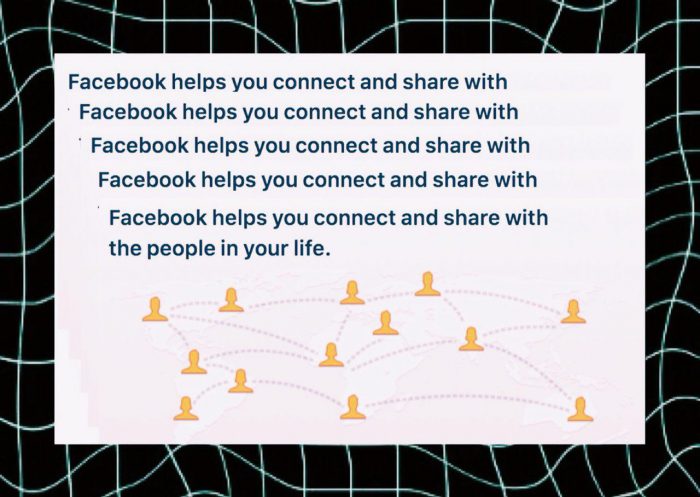
Face to Facebook,
Face to Facebook is an online installation piece put together by stealing 1 million Facebook profiles and compiling them all in a unofficial and custom-made dating page. Thereafter, many reacted to the dating website.
The creators of Face to Facebook collected profiles through a special custom software. They then studied and then customized a face recognition algorithm which is programmed to group the faces of the profiles to their supposed personality and traits, categorizing the profiles on the dating website.
On the surface, what the creators of Face to Facebook merely did was to compile the information found on the users’ Facebook profiles into another site. (which technically is not infringing on the privacy of the Facebook users, since the same information can be found on their Facebook profiles as well) However, compiling them on a dating page then changes the game. I am humoured by what the creators of Face to Facebook have done. They have made a point about the information we put online and has changed our perspectives of social media.
Our mission was to give all these virtual identities a new shared place to expose themselves freely, breaking Facebook’s constraints and boring social rules. So we established a new website (lovely-faces.com) giving them justice and granting them the possibility of soon being face to face with anybody who is attracted by their facial expression and related data.
-Creators of Face to Facebook
No doubt, the information on the dating website itself are distorted information, especially when the ignorant Facebook users are not actively looking for love on Facebook.Yet what I found interesting about it is that they come from harmless intentions, trying to prove a point on the type of information Facebook users put online in the increasingly connected world.
The things that happen on Facebook are really pretty meaningless. Not that they can’t have meaning, but simply that they don’t. Or, at least, they don’t until we get our collective hands on them. – D.E. Wittkower
In all honesty, we would not be bothered by a stranger’s Facebook we stumbled upon unless they are or friends, or people we have mutual friends with. Echoing what D.E. Wittkower has said, information we put on our social media are just extra information about our lives, very much like TMI (To Much Information) in current day teenage slang. Why then do we actively keep up with our social media accounts today? Are we merely updating our lives or trying to prove ourselves to others?
Parallel with Current Day Context – terming it Catfishing
In more recent news, as we shift from Facebook to Instagram and Snapchat in today’s context, information found on social media are still being stolen and used on dating websites and applications like Tinder. Catfish, is a coined term for it.
Catfishing which means to lure (someone) into a relationship by adopting a fictional online persona. This often means stealing someone else information online and putting them on another website with certain augmented information.
On example is in October 2017 when Benjamin Kheng, a Singaporean singer from the band The Sam Williow, discovered that there is a Tinder account created for him in Australia that he did not know about. The account used his images, but used abbreviation of his real name. The hacker who created the account used it talk to many girls on Tinder, giving a false image of the user of the profile the girls were talking to.
This ties in well with Face to Facebook and what the creators did to the Facebook profiles they found. Although there was not an ill intention to the created account on the dating website, but it has cautioned us on the information we decide to put online.
He compares our individual lives to those of cheese mites seen bustling about through a microscope. They all seem terribly busy with lots of activity, but as soon as we take our eye away from the magnifying scope, we see what it all amounts to: not much to post a status update about. He says that it’s the same with our lives as well—“It is only in the microscope that our life looks so big.” The microscope we have is this “I” that undergoes our experiences. It makes us focus in on our dinner in a way that we don’t focus on anyone else’s. It makes us care about our friends’ trivial status updates too. – D.E. Wittkower
In our world, social media has become such a huge part of our lives. We are all caught up with our phones, on social media. This has also resulted in FOMO (fear of missing out), an anxiety that an exciting or interesting event may currently be happening elsewhere, often aroused by posts seen on social media. Are we too caught up in being in the hype and sometimes lost our ability to find joy within our lives?
Current day, it is difficult to find ourselves connected to the people close to use in distance. With technology, we would rather be connected with people far from us through social media. We should they put down our phones, quit updating our Instagram stories, and step out to smell the flowers, smile at our neighbours, creating friendship much closer to us.
Additional Readings:
Face to Facebook – Hacking Monopolism Trilogy
The Eternal Frame by Ant Farm: How “Based on a True Story” is Indeed Powerful

Ant Farm, an extraordinary collective
Ant Farm is a group of radical practitioners, whose forte is in architecture, graphic arts and environment design founded by two architects, Chip Lord and Doug Michels, in San Francisco in 1968. Although they had dissolved in 1978, their works still continue to impact, teach and continue to inspire many today. The group that once saw themselves as underground architects/ artists, hence their collective name as Ant Farm, to be part of the counterculture, goes beyond social norms and expectations.
We wanted to be an architecture group that was more like a rock band. We were telling Sharon [a friend] that we would be doing underground architecture, like underground newspapers and underground movies, and she said, ‘Oh, you mean like an Ant Farm?’ and that’s all it took. It was very Ant Farm. The founding of the name was indicative of how Ant Farm worked: the right idea comes, everybody acknowledges it is the right idea and instantly adopts it.
— Doug Michels
Described by Gene Youngblood as “an autonomous reality community”, Ant Farm was going against the current, “working against the generation of (their) parents”.
The group were well-known for their inflatable architecture designs, though some did not go pass the conceptual stage. The Dream Cloud, one of their established projects, aimed at “creating temporary environment at the beach” where they explored the boundaries that architecture can go beyond the “physical multi-media environment”, as Chip Lord said in an interview with Randall Packer.
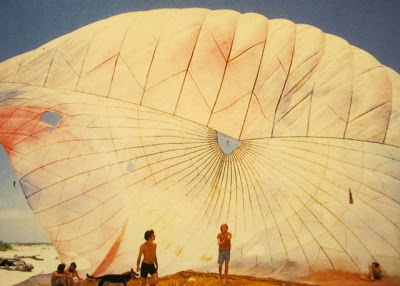
“Dream Cloud” during “AstroDaze” Freeport Beach, Texas, 1969 | taken from: http://mondo-blogo.blogspot.sg/2010/12/ant-farm-sex-drugs-rock-roll-cars.html
The Eternal Frame, Reenactment of the Assassination, otherwise known as “based on a true story”
During the 1968, where the assassination of Martin Luther King and Robert F. Kennedy shocked the world, the Ant Farm was of no exception. The revolution in the air drive the group to expand beyond just fictional narrative moving images, but incorporated a remarkable event in history that impacted the US, the assassination of Robert F. Kennedy.
The filming process involved the live performance and re-enactment of the actual happening of the assassination at Dealey Plaza, Dallas, Texas seen in the famous Zapruder film.
“The intent of this work was to examine and demystify the notion of the presidency, particularly Kennedy, as image archetype….”
— Doug Hall, 1984
The Eternal Frame pushes the boundary of the tense topic of the assassination through the re-enactment. Many might have heard about the event on the news or through the word of mouth, but the making of The Eternal Frame puts into perspective and into people’s minds the “true” happenings of the actual assassination.
“As photographers recorded images of places, objects, and people unmediated (it was thought) by the artist’s style, scholars believed that they could write history, in Leopold von Ranke’s essential phrase, “as it really was”.
-Rowman & Littlefiled, 1998
The Eternal Frame might just have merged history and film-making, documenting history through the lens of a camera, impacting people emotionally with the scenes that might have taken place in the actual setting of the assassination at Dealey Plaza.
This historical moment is captured in a much different way, bringing to light the digital representation and interpretation in the case the assassination of Robert F. Kennedy. The gory scenes of the blood filled gun shot and the collapse of Robert F. Kennedy can be put into perspective, despite its accurracy.
Putting my shoes in a regular patron of moving images much like The Eternal Frame, the “based on a true story” label moves away from the fictional narratives in the market, breaking boundaries will change my perspective of the film. It hints at the actual happening of the event in the past, bringing more emotions and more impacts, instilling the eternal frames captured through the lens of the camera into our minds.
Additional Readings
A Pitstop: DIWO & Experimental Interaction

Experimental Interaction – A Summary, awaiting a Sequel
DIWO, otherwise known as, Do It With Others, is a concept created by Marc Garrett, the founder of Furtherfield. A new perspective brought forward to encourage collaboration, this has shifted creative production from being top-down to being collaborated. In the first half of the semester, Experimental Interaction class has emphasized on the idea of Doing It With Others (DIWO), The Third Space, Collective Narrative and the idea of collaborative art. Moving from The Tele-stroll to glitching up images, every project has an essence of collaboration and or using The Third Space as a medium. Each project has opened up my perspective on the realm we can work with for artistic productions, living up to its name of being experimental and bringing engagement to an interactive manner.
Same Vision, Different Approach – A Breakthrough
The founding fathers of Open Source and Furtherfield both have the same vision – inculcating openness in the sharing and learning of knowledge, tapping on the idea of collaborating with relevant counterparts to produce a much greater good for the society. Each has a bold statement that pushes for the once conservative playing field of talented individuals. Founded between the 1950s to the 1960s, Open Source allowed the virtual sharing of content on the World Wide Web, stripping its monetary value. Opening the gate to progress and the advancement of the society through the sharing of knowledge, I would boldly say that their initiatives have played a huge part in shaping the world today. Take Steve Jobs’ Apple for instance, it is undoubtedly seen everywhere. (In fact I am using one right now.) Steve Jobs started Apple with open source components and then creating a closed source operating system called the Mac Os X then produced personal computers for home that revolutionized the usage of computers and thereafter our mobile phones and tablets. Dare I say, such radical moves advances the world, creating a different social culture altogether, a breakthrough.
Furtherfield, breaking the Conservative Culture
Taking a leap of faith to break the stereotypes of art culture in 1996, Furtherfield is a pioneer that broke the conservative culture. The emergence of Furtherfield created a more competitive and varied art scene to the one that was once flooded with elite artists. Going beyond just the four walls of a gallery, Furtherfield also created a platform that can host greater audience and boost viewership for artists on their humble first start-up website hosted at Backspace. Transforming the interaction to a two-way one, Furtherfield is a platform that allowed for conversations between the artists and the audience, a different approach in the appreciation of art. Besides, the Netbehaviour email list has encouraged people of the same interests to be connected through opportunities for dialogues, bringing people together.
As a dynamic art organization that is very involved with grass-root and ecology projects, Furtherfield is like no other. Creating a platform for the arts, technology and an advocate for social change, this perfect hybrid is indeed an exemplary addition to the art scene.
Micro-projects, in-class projects & the Third Space
Exploring the Third Space through The Tele-stroll and social broadcasting, the first micro-project involved a live-stream broadcasting with synchronization with our partners. Using the split-screen nature of the live broadcasting, we met our partners at the Third Space and produced “telepathic” moves as a form of performance.
Moving a step ahead, The Telematic Embrace, an exercise we did in class emphasized on collaboration and corporation as a social practice.
DIWO at the Third Space can be clearly seen. Moving interaction to the Third Space, we unleashed the playfulness of the medium by making use of the nature of the split screens placed in neat rows. Creating different ways we can be playful with it, finger touching, to finding items of the same colour, this collaborative project creates a form of collaborative art.
The Collaborative Body, a-photo-a-day project of our body parts pieced together is one that demonstrate a collective artwork. Different photos pieced together forms a collective body of oneself, as if the body is malleable enough to be placed in a random position, altering the conventional viewpoint of the body.
The Exquisite Glitch is a compilation of the different modifications that was made to the image, passing it down from one classmate to another. The final product is like an outcome by a computer virus, glitched, unrecognizable, nothing like its original. This is also a collective artwork that requires the input of more than one person to fully create.
DIWO, a term that involves the contribution of a mass looks at a more unpredictable, more unscripted form of art production. With the involvement of a group, no one person can predict what the outcome will be since the final product is the summation of all individual efforts through a collaborative technique.
Aftermath
Dissecting the projects we have done thus far, it is of no doubt that the DIWO concept is one of the main focus. Using the Third Space as a medium and the Collective Narrative as the the main way of production, DIWO the underlying concept behind is brought forth. As the generation that will rise up, this overarching idea of DIWO will be one that will expand in greater in depth and in width. Standing on the shoulders of our giants, we hope for a brighter tomorrow.
Additional Readings:
Steve Jobs: an open source pioneer? You bet.
Do It With Others (DIWO): Participatory Media in the Furtherfield Neighbourhood
